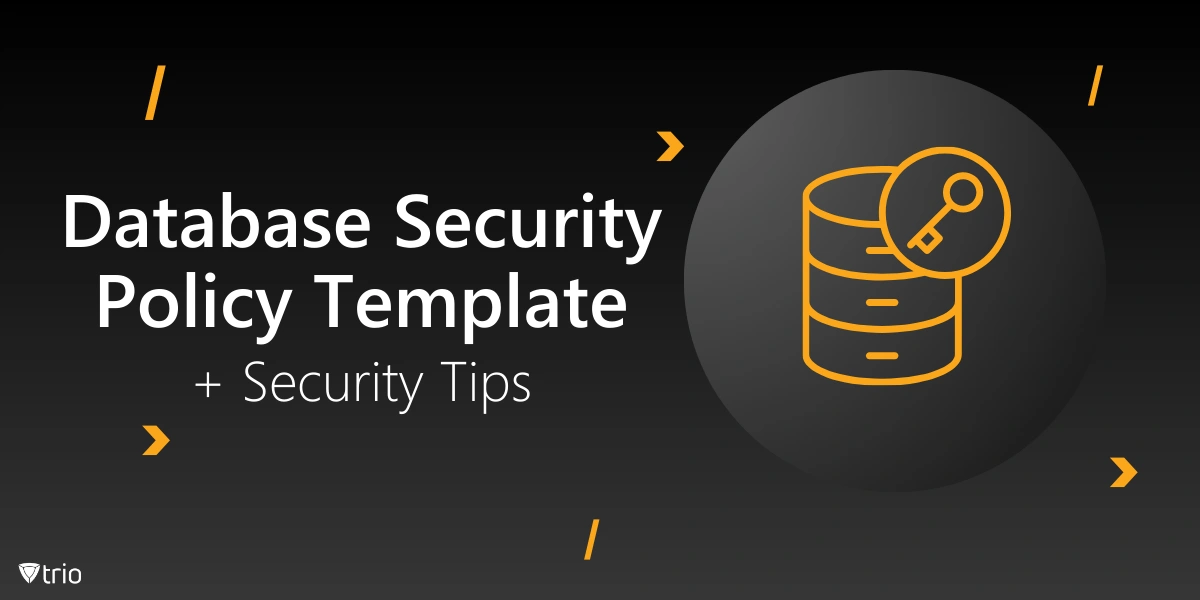A well-crafted Database Security Policy Template serves as the foundation for safeguarding your organization's most valuable asset: its data. In this comprehensive guide, we'll explore the critical components of a robust database security policy, delve into best practices, and provide you with a free, customizable data security policy template to jumpstart your security efforts.
Understanding the Importance of Database Security
Before we dive into the specifics of a Database Security Policy Template, it's crucial to understand why database security is so vital. Databases often contain an organization's most sensitive information, including customer data, financial records, and proprietary business intelligence. A breach in database security can lead to devastating consequences, including financial losses, reputational damage, and legal ramifications.
Key Components of a Database Security Policy Template
- Access Control and Authentication
- Implement strong user authentication mechanisms
- Utilize role-based access control (RBAC)
- Regularly review and update user access privileges
- Data Encryption
- Encrypt sensitive data both at rest and in transit
- Implement robust key management practices
- Auditing and Monitoring
- Set up comprehensive logging and auditing procedures
- Implement real-time monitoring for suspicious activities
- Backup and Recovery
- Establish regular backup schedules
- Test and verify backup integrity
- Develop and maintain a disaster recovery plan
- Patch Management
- Keep database management systems up-to-date with security patches
- Implement a structured patch testing and deployment process
- Data Masking and Redaction
- Implement data masking techniques for non-production environments
- Use data redaction to protect sensitive information in reports and exports
- Compliance and Regulatory Requirements
Database Security Best Practices
To enhance your database security system, consider implementing these best practices:
- Principle of Least Privilege: Grant users only the minimum access rights necessary to perform their job functions.
- Regular Security Assessments: Conduct periodic vulnerability scans and penetration testing to identify potential weaknesses in your database security.
- Employee Training: Educate staff on database security protocols and best practices to minimize human error.
- Network Segmentation: Isolate database servers from public-facing networks to reduce attack surfaces.
- Strong Password Policies: Enforce complex password requirements and implement multi-factor authentication for database access.
- Data Classification: Categorize data based on sensitivity levels and apply appropriate security controls accordingly.
- Incident Response Plan: Develop and regularly test a comprehensive incident response plan to address potential security breaches.
Data Storage Security Considerations
When it comes to data storage security, consider the following:
- Physical Security: Implement robust physical access controls to protect database servers and storage devices.
- Cloud Security: If using cloud-based database services, ensure proper configuration and security measures are in place.
- Data Retention and Disposal: Establish clear policies for data retention periods and secure data disposal methods.
- Encryption at Rest: Implement full-disk encryption for database servers and storage devices.
- Secure Backup Storage: Store backups in secure, off-site locations with appropriate access controls.
Free Database Security Policy Template
To streamline the process of creating a comprehensive database security policy, we've developed a customizable Database Security Policy Template that you can download for free. This template covers all the essential aspects of database security and can be tailored to meet your organization's specific needs.
The Role of Mobile Device Management (MDM) in Database Security
While a robust Database Security Policy Template is crucial, it's essential to consider the broader context of data protection, especially in today's mobile-centric work environment. This is where Mobile Device Management (MDM) solutions, like Trio, play a vital role in enhancing your overall data security strategy.
Introducing Trio: Your Comprehensive MDM Solution
Trio is a state-of-the-art MDM solution designed to complement and reinforce your database security efforts. Here's how Trio can benefit organizations in the context of database security:
- Device-level Encryption: Trio ensures that all mobile devices accessing your database are properly encrypted, adding an extra layer of protection for sensitive data.
- Remote Wipe Capabilities: In case of a lost or stolen device, Trio allows you to remotely wipe all data, preventing unauthorized access to your database.
- Access Control: Trio helps enforce your access control policies by managing user authentication and authorization on mobile devices.
- Secure Connections: With Trio, you can ensure that all connections to your database from mobile devices are made through secure, encrypted channels.
- Application Management: Control which apps can access your database by managing app installations and permissions on mobile devices.
- Compliance Enforcement: Trio helps maintain compliance with various regulations by enforcing security policies across all mobile devices.
- Real-time Monitoring: Get instant alerts on potential security threats or policy violations, allowing for quick response to protect your database.
By integrating Trio into your overall database security strategy, you can extend your protection beyond the database itself to the various endpoints that access it, creating a more comprehensive and robust security posture. To experience the full potential of the Trio MDM solution schedule a free demo today.
Conclusion
A well-crafted Database Security Policy Template is the cornerstone of protecting your organization's most valuable asset: its data. By implementing database security best practices, utilizing a robust database security system, and addressing data storage security concerns, you can significantly reduce the risk of data breaches and unauthorized access.
Remember, database security is an ongoing process that requires regular review and updates to stay ahead of evolving threats. Utilize our free Database Security Policy Template as a starting point, and consider implementing an MDM solution like Trio to enhance your overall data protection strategy.
Don't wait for a security breach to occur—take proactive steps today to safeguard your database and protect your organization's future. Download our free template and explore how Trio can elevate your database security to the next level.
Get Ahead of the Curve
Every organization today needs a solution to automate time-consuming tasks and strengthen security.
Without the right tools, manual processes drain resources and leave gaps in protection. Trio MDM is designed to solve this problem, automating key tasks, boosting security, and ensuring compliance with ease.
Don't let inefficiencies hold you back. Learn how Trio MDM can revolutionize your IT operations or request a free trial today!





